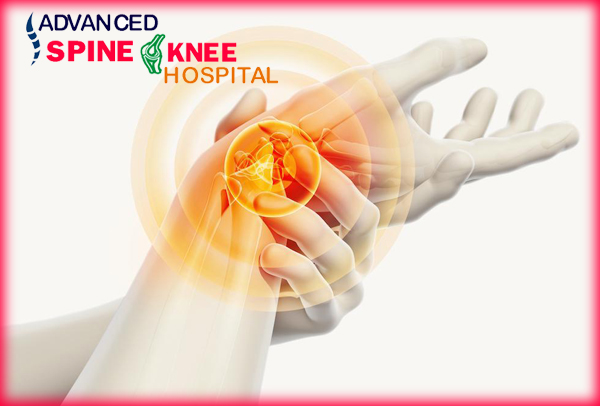The carpal tunnel is located in the wrist, and is formed by the bones of the wrist and the transverse carpal (wrist) ligament. Through this tunnel pass the median nerve, flexor tendons (helps to curl your fingers) and tendon sheaths.
Carpal tunnel syndrome (also known as median nerve compression) is a common cause of symptoms in the hand and wrist.
Carpal tunnel syndrome is caused by swelling or compression of the median nerve as it passes through the carpal tunnel from the forearm into the hand. The carpal tunnel is a narrow space, and swelling within or around it can compress the median nerve and lead to the development of symptoms, such as tingling and numbness and pain, on the thumb side of the hand up to the ring finger. Muscle weakness can also occur. There are numerous causes of carpal tunnel syndrome, some are due to associated medical problems. Tendinopathy (swelling of the tendons), synovitis (swelling and inflammation of the tendon sheaths) or joint swellings around the carpal tunnel can also cause symptoms of carpal tunnel syndrome.
The injection should reduce inflammation or swelling in and around the median nerve, the flexor tendons and the tendon sheaths, which in turn should relieve your symptoms.
This is a very safe procedure with few significant risks, but occasionally problems are experienced.
- An allergic reaction to the corticosteroid or local anaesthetic is uncommon. Allergies to antiseptic liquid and dressings/bandaids can also occur.
- Some people find that the injection gives them pain relief for a few months, but the symptoms can then return. Though taking another injection is easy, injections over a long period are not recommended. The exact risk of multiple injections is not known, most doctors would advise not to take injection more than three times a year to avoid tissue atrophy (thinning and scarring) within the carpal tunnel.
- There is a very small risk of infection, which is minimised by the doctor carrying out the procedure under clean conditions. The injection will not be administered if there is broken skin or infection in the skin over the carpal tunnel area.
- There is a remote risk of the needle passing through the nerve, which would cause severe pain or nerve symptoms. Although this is extremely remote, it is a known risk of injections carried out close to nerves.
Benefits of a carpal tunnel ultrasound and injection:
Sometimes the ultrasound is carried out for diagnostic reasons, if your doctor is uncertain as to the cause of your symptoms.
The aim of the injection is to provide relief from the symptoms. A good response to the injection confirms the diagnosis of carpal tunnel syndrome. A lack of response (no improvement in symptoms) indicates the pain is unlikely to be due to carpal tunnel syndrome. Although having the injection might not result in any improvement in your symptoms, it can be helpful information for your doctor, as it means that other possible causes need to be investigated.
The relief of symptoms might last a few weeks or several months. Occasionally, (usually when the condition is recent or due to recent overuse), the symptoms resolve completely.

